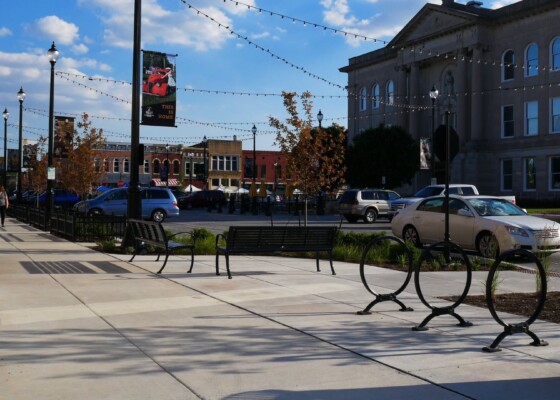Commercial vs. Traditional Ag
November 1, 2010I am extremely excited to present a program at this year’s Spirit & Place Festival entitled “Commercial vs. Traditional Agriculture: What’s Working, What’s Not and Why” WHEN: Thursday, Nov. 11, 7 p.m….
I am extremely excited to present a program at this year’s Spirit & Place Festival entitled “Commercial vs. Traditional Agriculture: What’s Working, What’s Not and Why”
WHEN: Thursday, Nov. 11, 7 p.m.
WHERE: Indiana State Museum, Dean & Barbara White Auditorium
Maybe it’s my rural Illinois upbringing or my love of quality food and local restaurants, but I’ve become fascinated with these conversations and controversies between commercial and traditional agriculture. I’ve had intriguing conversations with friends on both sides of the issues from all over the country — BUT NEVER IN THE SAME ROOM AT THE SAME TIME. This event is about bringing experts from both sides and finding common ground that’s best for all of us.
Below is the basic description. I’m thrilled and honored to welcome:
— Chad Gregory, senior vice president of United Egg Producers
— Todd Jameson, owner, Balanced Harvest Farms and president of Slow Food Indy
— Moderator, Sue McCloskey, co-founder and owner of Fair Oaks Farms in Fair Oaks, Indiana (one of the largest dairy farms in the U.S. that uses BOTH commercial and organic farming practices)
…Three experts who will bring informed and impassioned perspectives on this topic.
Following brief presentations by Chad and Todd, Sue will moderate a discussion with them and then open the discussion up for audience Q&A.
EVENT DESCRIPTION
“Commercial vs. Traditional Agriculture: What’s Working, What’s Not and Why”
Commercial agriculture today allows us to eat buffets full of shrimp, strawberries, bananas and bok choy. Movies and books like Food, Inc. and Omnivore’s Dilhemma have enlightened the public on the issues surrounding global food production and fueled a food movement that casts an ominous shadow on commercial agriculture often positioning its farmers as the “bad guys.”
Meanwhile, this movement has also created an increased demand for organically-grown, local food that far exceeds what local farmers can supply. This sounds like a great problem to have for the local farmer — until you try to become one.
Small farms, classified as roughly 2,000 acres or less, typically produce seasonal foods indigenous to the area. In Indiana, that includes tomatoes, root vegetables, greens, dairy products and eggs. Local restaurants and farmers’ markets gobble up every last leaf creating a profitable cash crop. However, local farmers literally bet the farm when supply is gone or dramatically reduced due to weather or other unforeseen crop complications. All too often they are left wondering if there is enough income to make it to the next growing season.
The reality of these competing dynamics underscores the fact that we need both farming systems to satiate our complex, global appetite. This panel discussion will present the advantages and disadvantages of commercial and traditional agriculture and explore ways in which both systems can be improved to better meet local and global demands. Our expert panelists will engage the audience in a dialogue on how Indiana can leverage both systems for greater health and economic well-being.
Panelists include Chad Gregory, senior vice president of United Egg Producers, which represents 95% of egg producers in the U.S., and co-founder of the Center for Food Integrity and Todd Jameson, owner of Balanced Harvest Farm and CSA, a certified naturally grown 20-acre farm in Hamilton County, and president of Slow Food Indy. Our moderator, Sue McCloskey, is co-founder and owner of Fair Oaks Farms in Fair Oaks, Indiana, one of the largest dairy farms in the U.S. with 30,000 cows on 20,000 acres that uses both commercial and organic farming practices.
This post was written by Gail Payne, owner of The Goods: Thoughtful Marketing, Authentic Living.

